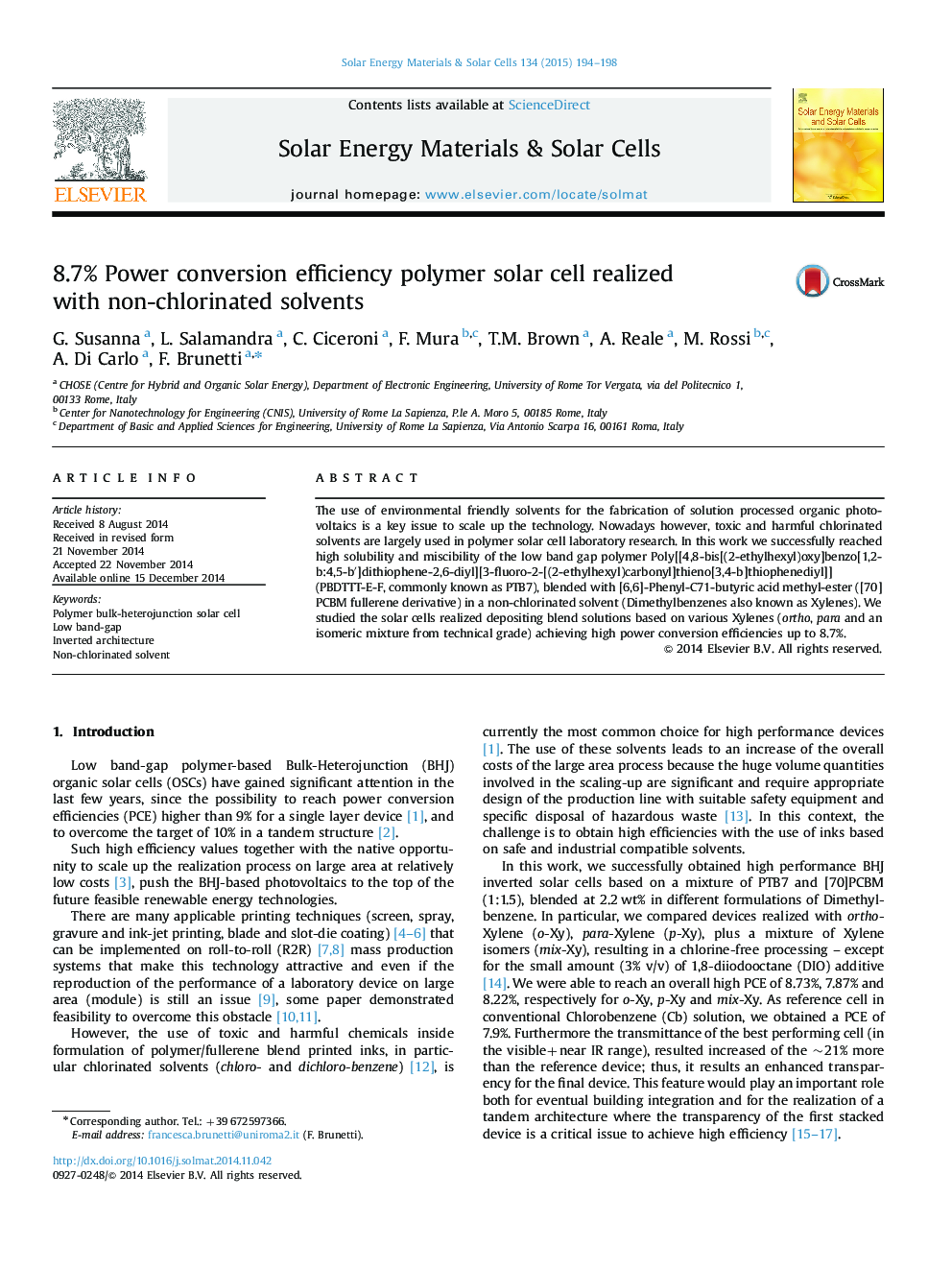| Article ID | Journal | Published Year | Pages | File Type |
|---|---|---|---|---|
| 77907 | Solar Energy Materials and Solar Cells | 2015 | 5 Pages |
•We studied PTB7:[70]PCBM solar cells made by solutions based on various Xylenes.•We achieved PCE of 8.73%, 7.87% and 8.22%, respectively for o-Xy, p-Xy and mix-Xy.•We achieved high efficiency with Xylene from technical grade (isomeric mixture).•We overcome the reference chlorobenzene sample PCE (7.87%) with two of the Xylenes.
The use of environmental friendly solvents for the fabrication of solution processed organic photovoltaics is a key issue to scale up the technology. Nowadays however, toxic and harmful chlorinated solvents are largely used in polymer solar cell laboratory research. In this work we successfully reached high solubility and miscibility of the low band gap polymer Poly[[4,8-bis[(2-ethylhexyl)oxy]benzo[1,2-b:4,5-b′]dithiophene-2,6-diyl][3-fluoro-2-[(2-ethylhexyl)carbonyl]thieno[3,4-b]thiophenediyl]] (PBDTTT-E-F, commonly known as PTB7), blended with [6,6]-Phenyl-C71-butyric acid methyl-ester ([70]PCBM fullerene derivative) in a non-chlorinated solvent (Dimethylbenzenes also known as Xylenes). We studied the solar cells realized depositing blend solutions based on various Xylenes (ortho, para and an isomeric mixture from technical grade) achieving high power conversion efficiencies up to 8.7%.
